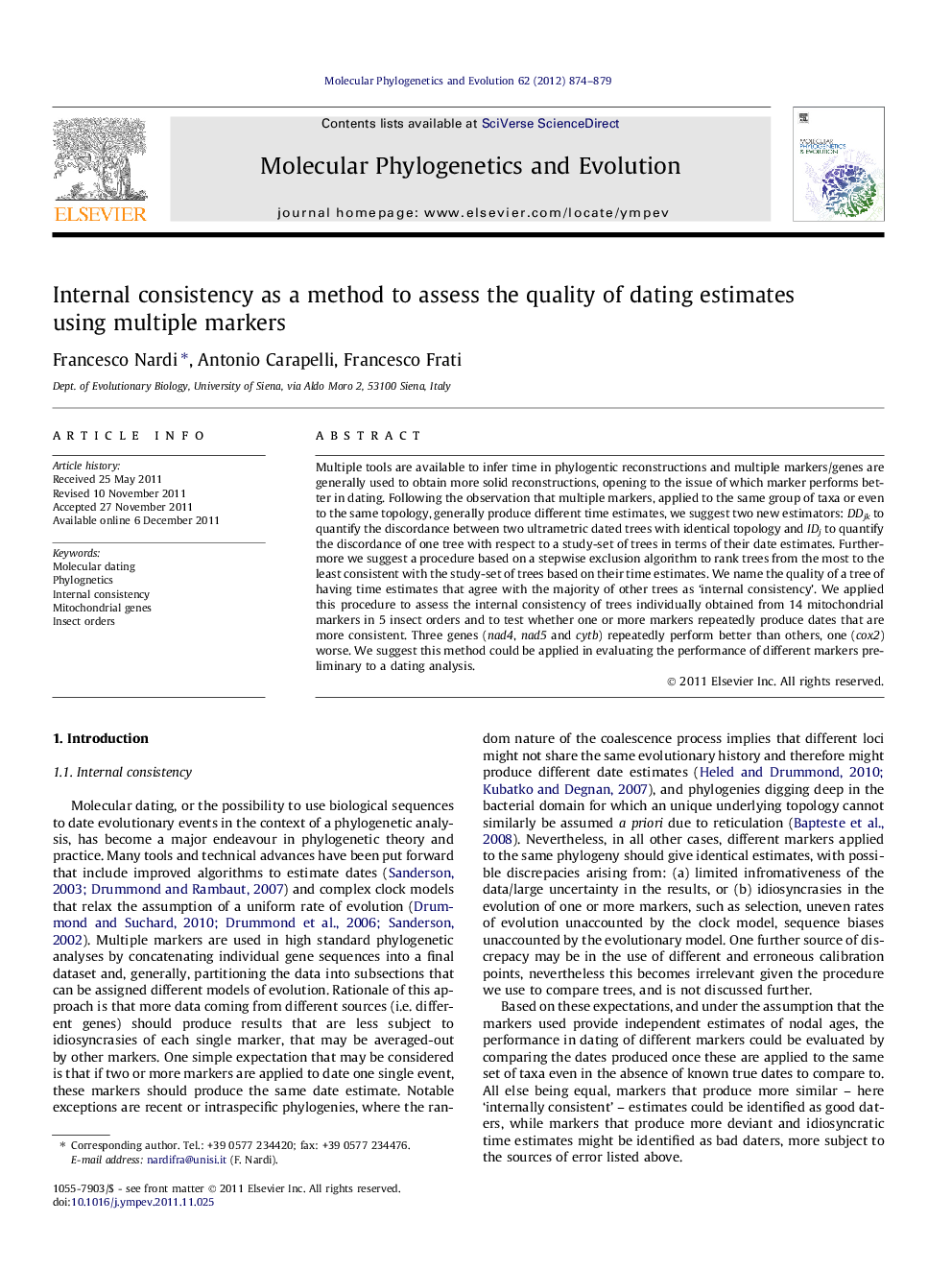| Article ID | Journal | Published Year | Pages | File Type |
|---|---|---|---|---|
| 5920297 | Molecular Phylogenetics and Evolution | 2012 | 6 Pages |
Multiple tools are available to infer time in phylogentic reconstructions and multiple markers/genes are generally used to obtain more solid reconstructions, opening to the issue of which marker performs better in dating. Following the observation that multiple markers, applied to the same group of taxa or even to the same topology, generally produce different time estimates, we suggest two new estimators: DDjk to quantify the discordance between two ultrametric dated trees with identical topology and IDj to quantify the discordance of one tree with respect to a study-set of trees in terms of their date estimates. Furthermore we suggest a procedure based on a stepwise exclusion algorithm to rank trees from the most to the least consistent with the study-set of trees based on their time estimates. We name the quality of a tree of having time estimates that agree with the majority of other trees as 'internal consistency'. We applied this procedure to assess the internal consistency of trees individually obtained from 14 mitochondrial markers in 5 insect orders and to test whether one or more markers repeatedly produce dates that are more consistent. Three genes (nad4, nad5 and cytb) repeatedly perform better than others, one (cox2) worse. We suggest this method could be applied in evaluating the performance of different markers preliminary to a dating analysis.
Graphical abstractDownload full-size imageHighlights⺠A measure is proposed to quantify how much two fully resolved ultrametric trees differ in terms of their date estimates. ⺠An algorithm is proposed to rank markers from the most to the least consistent with the remaining trees of the study set. ⺠We propose that markers producing consistent date estimates can, in certain conditions, be regarded as the more accurate. ⺠The method is applied to five unrelated sets of 14 genes from insect complete mitochondrial genomes. ⺠Performance of markers is non-random, with nad4, nad5 and cytb scoring high across unrelated sets of genomes.
